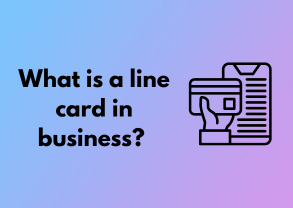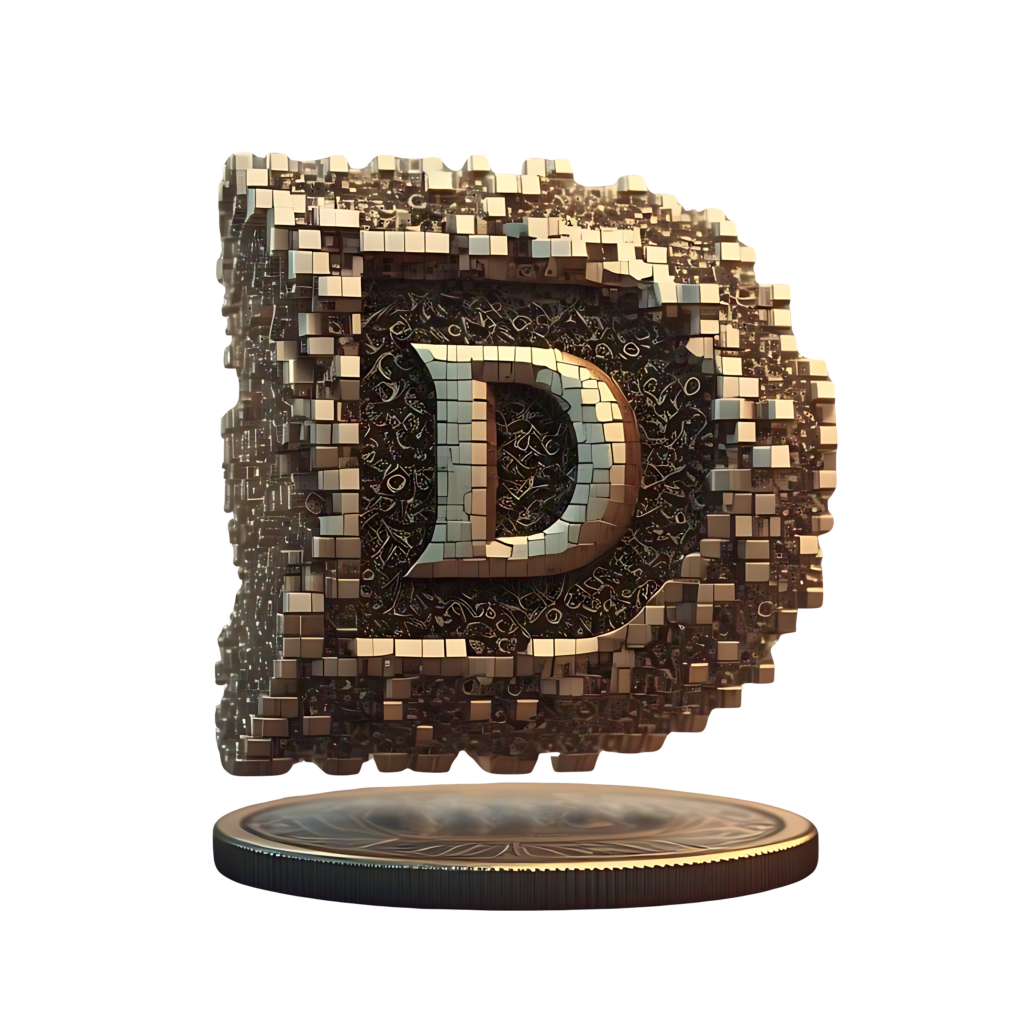Hello there! If you’ve been scrolling through the latest news or social media, you may have come across buzz about “Elon Musk Cryptocurrency.” It sounds intriguing, right? I mean, Elon Musk and cryptocurrency – two power-packed buzzwords in their own right. But before you dive into this world and start whipping out your credit card, let’s pause for a second and get to grips with what’s real and what might just be hype.
First, let’s address the big question: Does ‘Elon Musk Cryptocurrency’ actually exist? Despite all the chatter, there’s no official cryptocurrency created or endorsed by Elon Musk himself. That’s right – no secret MuskCoin, MarsToken, or SpaceX Blockchain (not yet, at least). What does exist, however, are projects and coins that reference or are inspired by him. For instance, tokens like Dogecoin have gained popularity after Musk tweeted about them, but these are not officially his creations. It’s a very fine line, and unfortunately, this ambiguity sometimes opens up opportunities for scams.
It’s important to differentiate between coins Musk has discussed or supported (like Dogecoin or Bitcoin) and those that are outright false claims. Some developers create cryptocurrencies and use his name or likeness to capitalize on his fame. And as much as Musk tweeting about a coin can shoot it ‘to the moon,’ it doesn’t necessarily mean it’s a safe or stable investment.

Why does Elon Musk get linked to cryptocurrency so often?
Another good question! As a prominent public figure, Musk has been very vocal – and influential – in the crypto space. His tweets alone have caused massive fluctuations in Bitcoin and Dogecoin’s value. For example, his announcement in 2021 that Tesla would accept Bitcoin as payment, followed by the reversal of that decision due to environmental concerns, led to significant ripples in the market.
He’s also championed Dogecoin as a “people’s cryptocurrency,” and the tech-driven nature of cryptocurrency aligns with his forward-thinking, boundary-pushing public persona. So, while Musk is often a major catalyst in the crypto discussion, it’s essential to discern between what’s an endorsement, a joke, or just speculative internet noise.
Must-know tips for separating fact from fiction:
- Verify official sources: If you see claims about Musk endorsing or backing a new coin, check his verified social media accounts (like X, formerly Twitter) or Tesla/SpaceX official communications.
- Watch out for vague language: Scams often rely on ambiguous phrases like “Elon Musk’s secret currency” or “guaranteed returns.” Always be skeptical of lofty promises.
- Do your homework: Use reliable news outlets or crypto platforms to research any coin tied to his name. Don’t trust faceless ads or random links.
Identifying Trusted Platforms and Avoiding Scams
Before you jump headfirst into the world of cryptocurrency—especially if you’re interested in something as buzzworthy as an “Elon Musk cryptocurrency”—you should know one thing: scammers are everywhere. But don’t worry, I’m here to help you navigate the digital coin jungle safely and smartly.
Why Trust Matters When Choosing a Platform
Buying cryptocurrency starts with choosing the right platform. Think of it as picking the right bank, but in a digital space (minus free pens and lollipops). You don’t want just any platform; you want one that’s reliable, secure, and well-reputed. But with so many options, how do you figure out which ones to trust?
Here are a few markers of trust in a cryptocurrency platform:
- Regulation and Licensing: Always look for platforms that follow your region’s financial regulations and are licensed. This ensures they are operating legally and protecting your funds.
- User Reviews and Ratings: Check for reviews from other users on trusted websites or forums like Reddit and Trustpilot. A high number of positive reviews is a good indicator of reliability.
- Transparent Fees: A trusted platform will always disclose its transaction and withdrawal fees upfront, sparing you unpleasant surprises later.
How to Spot a Cryptocurrency Scam
Unfortunately, the crypto world has its fair share of bad actors. But the good news? Spotting a scam gets much easier when you know what red flags to look for. Here are some telltale signs:
- Promises of Guaranteed Returns: If a platform or “investment opportunity” guarantees high returns with no risk, it’s almost certainly a scam. Remember, even the cryptocurrency market isn’t immune to standard investment risks.
- Poor Website Security: Look at the website’s URL. Does it start with “https://”? If not, it’s lacking encryption, which could put your personal data at risk.
- Pressure Tactics: Scammers often pressure you to act quickly or risk missing an “opportunity of a lifetime.” Always stay calm and research thoroughly before investing.
- Fake Elon Musk Endorsements: Elon Musk is often tied to cryptocurrency hype, but be aware that scammers frequently impersonate him or falsely use his name to trap unsuspecting buyers. If it seems too good to be true, it probably is.
Popular Trusted Platforms to Consider
If you’ve done your homework and are ready to proceed, some popular platforms you might explore include:
- Coinbase: Known for its user-friendly interface, strong security, and educational tools for beginners.
- Binance: One of the largest crypto exchanges, offering advanced trading features for more experienced users.
- Kraken: A solid choice with strong security measures and a wide range of cryptocurrencies available.
- Gemini: A regulated platform with a focus on security and compliance, perfect for peace of mind.
Stick to these well-known platforms, and you’ll have a much smoother and safer experience getting started.
Decoding Coin Types and Their Purpose in the Market
When stepping into the world of cryptocurrency, things can quickly feel overwhelming. Suddenly, you’re hearing terms like “altcoins,” “meme coins,” and “utility tokens.” If your goal is to potentially buy into cryptocurrencies linked to the Elon Musk hype, it’s crucial first to understand the type of coins out there and their roles in the market. So, grab your digital magnifying glass, and let’s decode the fascinating (and slightly wild) world of coin types.
1. The Different Coin Categories
Not all cryptocurrencies are created equal. They serve different purposes, and knowing the categories is the best way to navigate your options. Here’s a breakdown:
- Utility Tokens: These are coins designed for a specific platform or service, giving users access to its features. For example, Ethereum (ETH) powers smart contracts and decentralized applications. These coins are functional tools rather than just stores of value.
- Store of Value Coins: Think of these as cryptocurrency “gold.” Bitcoin (BTC) is the poster child of this group. These are primarily used for saving and holding value because of their limited supply and trust within the market.
- Stablecoins: If market volatility terrifies you, stablecoins might be your friend. They’re pegged to traditional fiat currencies like the U.S. Dollar, making them more… stable (obviously). Tether (USDT) and USD Coin (USDC) are some well-known examples.
- Meme Coins: Meme coins, like Dogecoin (DOGE) or Shiba Inu (SHIB), usually start as jokes but can snowball into serious investments, often tied to community hype. These are where Elon Musk has wielded significant influence in the past, especially with his tweets boosting coins like Doge. Just remember, their value is largely sentiment-driven!
- Governance Tokens: These tokens provide holders with a voice in a crypto project’s future. If you own a governance token, you can vote on decisions, much like being a shareholder in a company. Think of projects like Uniswap (UNI).
Understanding these categories will help you decide which type of coin aligns with your goals. Looking to join the Musk-coin buzz? You’re likely venturing into the meme coin or utility token world!
2. So, Where Does Elon Musk Fit in the Coin Universe?
Elon Musk doesn’t have his own cryptocurrency—at least not officially (yet). However, his tweets and statements have influenced several coins, most notably Dogecoin. This can lead to what some investors call “Musk-driven rallies.” Having this context is essential because coins associated with the “Elon Musk narrative” often see extreme price swings when he weighs in.
Besides Dogecoin, you might stumble across new tokens claiming ties to Musk—sometimes with his name or likeness. Beware: these tend to be opportunistic projects created to capitalize on his brand. If you’re considering these coins, ensure they have real use cases or reputable developer backing before diving in.
3. Coin Purpose: Why Does It Matter?
Understanding a coin’s purpose and technical fundamentals is key to making informed decisions—whether you’re going long-term or riding short-lived waves.
- Is the coin solving a real problem? Cryptocurrencies that have utility in the real world are less likely to fade into obscurity.
- Does it hold value over time? Meme coins are riskier because they rely heavily on trends, while store-of-value coins are more stable investments.
- Community engagement: Some cryptocurrencies survive purely because of the passion and size of their communities. Dogecoin, for instance, thrives on its loyal fan base, with Musk often fueling this sentiment.
Don’t just dive into a coin because it’s shiny or trending on Twitter. Dive deeper into its purpose in the market.
Setting Up a Secure Wallet for Transactions
Before diving into the world of cryptocurrency, one of the most crucial steps you need to take is setting up a secure wallet. Think of this as your virtual vault – a safe place where your cryptocurrency is stored and protected. Without this, any coins you buy could be vulnerable to theft or loss. Let’s walk through everything you need to know about wallets and setting one up properly.
Why Do You Need a Crypto Wallet?
Unlike traditional currencies that reside in banks, cryptocurrencies like Bitcoin, Ethereum, or even a hypothetical “Elon Musk Cryptocurrency” live online in decentralized systems. Your crypto wallet is your private key to managing, storing, and protecting your digital assets. Without a wallet, your coins are prone to risks like hacks or scams, and let’s be honest – no one wants to lose their hard-earned investments, right?
Two Main Types of Wallets: Which One is Right for You?
First, let’s break down the two main kinds of wallets you’ll want to consider:
- Hot Wallets: These are connected to the internet – think apps or web platforms. They’re convenient, easy to set up, and ideal if you plan to make frequent transactions. However, since they’re online, they’re more vulnerable to cyberattacks.
- Cold Wallets: These are offline wallets, like a hardware wallet or even a paper wallet. Since they’re not connected to the internet, they offer superior security and are your go-to if you’re planning to hold your cryptocurrency long-term.
If you’re just starting, a reliable hot wallet might feel simpler and faster to use. For those more seasoned or cautious investors, cold wallets are a more secure choice.
Steps to Set Up a Wallet
- Research Wallet Options: Choose from trusted wallet providers based on your needs. Popular names for hot wallets include Coinbase Wallet and MetaMask. For cold wallets, brands like Ledger or Trezor are highly reputable.
- Download and Install: Once you’ve picked a wallet, visit the official website or app store to install the wallet. Double-check that you’re on the right site to avoid phishing scams. Never download wallets from random links or unverified sources.
- Set Up Your Account or Device: Follow the prompts to create an account or activate your wallet. This usually involves creating a strong password and saving a recovery phrase or seed phrase. Important: Write your seed phrase down on paper and keep it in a secure, offline location. Do NOT store it digitally, as it can be easily hacked.
- Enable Extra Security: Turn on two-factor authentication (2FA) if available. This adds an extra layer of protection by requiring a second confirmation for access.
Tips for Keeping Your Wallet Secure
Security is the name of the game in crypto, so here are some golden rules:
- Never share your private key or recovery phrase with anyone, not even “customer support.”
- Stick to official wallet apps and platforms to avoid malware-ridden alternatives.
- Regularly update your wallet app or device firmware to patch any security flaws.
Step-by-Step Guide to Buying Safely Online
So, you’re excited to dive into the world of cryptocurrency and are possibly eyeing tokens tied to Elon Musk’s influence. Whether it’s a crypto featuring his name or one supported by his larger-than-life persona and following, buying safely online is key. Here’s an easy-to-follow guide that breaks down the process into clear, manageable steps for you. Buckle up, and let’s make this safe and headache-free!
1. Start With Thorough Research
First things first, do your homework. Cryptocurrency trading can be risky, especially in the case of coins that hype off of a celebrity like Elon Musk. Be sure that the coin you’re buying isn’t a scam or pump-and-dump scheme. Check forums, reviews, and trusted resources to ensure legitimacy. A cautious investor is a smart investor!
2. Choose a Reliable Cryptocurrency Exchange
Where you buy is just as important as what you buy. Stick to popular, reputable exchanges like Coinbase, Binance, or Kraken. These platforms have robust security measures in place and are widely recommended by the crypto community. Avoid obscure or poorly rated exchanges that might lack the safeguards to protect your investment.
3. Set Up an Account and Verify Your Information
Once you’ve decided on a platform, sign up for an account. Most exchanges require identification for verification to comply with regulations and keep transactions secure. This may include uploading a photo ID and providing personal information. While this step might seem tedious, it’s your first defense against fraud and illegal activity.
4. Fund Your Account Safely
With your account set up, you’ll need to deposit funds. Most platforms accept payments via bank transfer, credit/debit card, or even PayPal for convenience. Ensure that the payment method you use is secure. If you’re funding your wallet using bank details, double-check the platform’s encryption standards before proceeding.
5. Search for the Cryptocurrency You Want to Purchase
After your account is funded, navigate to the search bar in your exchange’s marketplace and locate the cryptocurrency you’re looking to buy. If “Elon Musk Cryptocurrency” isn’t directly available, look either for its ticker symbol (e.g., DOGE for Dogecoin, a Musk-endorsed favorite) or related tokens.
6. Determine How Much to Buy
Start small, especially if you’re new to this. Cryptocurrency markets are volatile and unpredictable. While you might be tempted to invest big, consider testing the waters first. Calculate how much you’re willing to invest and set clear limits.
7. Execute the Trade
Here comes the fun part—buying the cryptocurrency! Select the amount you want and review the transaction details. Before hitting confirm, double-check fees, price, and wallet destination to make sure everything lines up. Click the final button, and voilà! You’re now the proud owner of some digital coins!
8. Transfer Coins to a Secure Wallet
While most exchanges provide a wallet service, it’s better to play it safe and transfer your cryptocurrency to a private wallet. A hardware wallet (like a Ledger or Trezor) is the gold standard for security because it stores your coins offline and away from hackers. Think of it as locking your valuables in a safe instead of a public locker.
9. Keep Transaction Records
Once the process is complete, save all transaction records, including confirmation emails and wallet addresses. This is crucial for tax purposes and in case you need to resolve any issues down the road.
10. Stay Vigilant Post-Purchase
It’s important to keep an eye on your investment and the market. Monitor for any major developments regarding your chosen cryptocurrency and be on the lookout for scams targeting its holders—there’s no such thing as being too careful.
Exploring Risks and Market Trends Before Investing
So you’re getting ready to venture into the exciting world of cryptocurrency, but wait — before you jump headfirst into the Elon Musk-themed coin hype, it’s crucial to pause and examine the risks and trends in the market. The crypto market is as thrilling as it is unpredictable, so doing your due diligence is key to making smart, informed decisions. Here’s a breakdown of what you should know before diving in:
Understanding the Risks
Investing in cryptocurrency can feel like riding a rollercoaster blindfolded — exhilarating but nerve-wracking. Here’s why:
- Market Volatility: Cryptocurrencies are infamous for their wild price swings. One day your investment might skyrocket, and the next, it could plummet. Coins influenced by celebrity hype, like any “Elon Musk cryptocurrency,” can be especially erratic.
- Regulatory Uncertainty: Governments and financial institutions worldwide are still figuring out how to regulate cryptocurrencies. This uncertainty can impact the value of your investment.
- Security Concerns: While blockchain technology is inherently secure, the same cannot be said for some trading platforms and wallets. Hacks and scams are common risks in this space.
- Meme Coin Risks: If the crypto is inspired by Elon Musk mentions or memes, it could be more of a fleeting trend than a stable investment. You might be jumping on a train bound for quick fame rather than long-term substance.
Understanding these risks upfront helps you remain level-headed and avoid making impulsive decisions.
Keeping an Eye on Market Trends
A savvy investor knows that timing is everything. Studying market trends ensures you’re not just buying into a fleeting fad but making calculated moves. Here’s how to stay ahead:
- Stay Updated: Regularly check reputable news outlets and platforms like CoinDesk or CryptoSlate. Keeping tabs on what’s driving excitement around certain coins (like an Elon Musk tweet) can give you a clearer picture.
- Understand the Hype Cycle: Celebrity-endorsed coins can skyrocket due to online buzz, but this is often followed by a sharp drop. Always ask yourself: Is this a long-term project with real-world applications, or just a pump-and-dump scheme?
- Technical Analysis: Learn to read crypto charts! Look for trends like market cap changes, trading volumes, and price fluctuations over time. Tools like TradingView can help you understand whether it’s the right time to buy.
- Community Sentiment: Crypto thrives on community. Check out forums like Reddit or Twitter to gauge public opinion about a particular currency. Be cautious of overly evangelical or cult-like hype, though—it’s not always trustworthy.
Engaging with market trends doesn’t mean you need to become a financial expert, but having a sense of the bigger picture can stop you from buying at the top of a bubble.
Pro Tips Before You Commit
Before you click that “Buy” button, ask yourself a few good questions:
- Have I done thorough research beyond what influencers or social media say?
- Am I prepared for the possibility of losing this investment?
- Do I understand the project’s functionality, vision, and future potential?
Remember, smart crypto investing isn’t about getting rich overnight — it’s about making informed choices that fit your financial goals and comfort with risk.
Managing and Monitoring Your Cryptocurrency Post-Purchase
Congratulations, you’ve taken the plunge into the digital currency world and purchased your Elon Musk-inspired cryptocurrency! Now, what’s next? Although the buying process is exciting, the real work begins afterward. Managing and monitoring your cryptocurrency correctly is crucial to keeping your assets safe and maximizing potential growth. Let’s dive into some best practices to stay on top of your investment like a pro.
Secure, Monitor, and Stay Organized
Once you’ve made your purchase, the first and most important step is ensuring your cryptocurrency is stored safely. While we covered wallet setup earlier, let’s emphasize how critical it is to stay vigilant with your holdings post-purchase.
- Prioritize Security: Always store your cryptocurrency in a reliable and well-protected wallet. If you’re using a hardware wallet (a physical device), ensure it is kept in a safe location and regularly updated with firmware to patch any vulnerabilities. For software wallets, enable two-factor authentication (2FA) to add an extra layer of security.
- Stay Organized: Keep a record of your wallet keys, recovery phrases, and transaction details in a secure place. Losing access to your wallet because of misplaced keys could mean losing your investment for good. Yes, it’s a bit of a headache, but it’s a headache worth avoiding!
It’s also wise to review your wallet periodically to ensure everything is in place. While cryptocurrency operates on decentralized blockchains, hackers never stop innovating—so neither should your security measures.
Monitor Performance Like a Pro
Once you’ve secured your cryptocurrency, it’s time to track its performance. Remember, the crypto market is highly volatile, meaning values can fluctuate dramatically. Monitoring your coins will help you make informed decisions. Here’s how to keep tabs:
- Use Trusted Platforms: There are several cryptocurrency tracking platforms that provide real-time prices, market trends, and portfolio performance analytics. Apps like CoinMarketCap or CoinGecko are worth exploring—they’re user-friendly and offer accurate data.
- Set Alerts: Most tracking apps and platforms allow you to set price alerts. These alerts will notify you when your investment hits a certain value, making it easier for you to decide when to hold, sell, or buy more.
- Keep Up With News: Since this is an Elon Musk-inspired cryptocurrency, his tweets, news about his ventures, or any major tech developments could impact the coin’s value. Stay in the loop by following credible news outlets or trusted crypto analysts.
Should You HODL or Act?
A popular term in the cryptocurrency world is “HODL” which humorously stands for “Hold On for Dear Life.” But is holding the right move for you? That depends on your investment goals. Here are two strategies to consider:
- Short-Term Monitoring: If you’re planning to trade your cryptocurrency actively, keep a close eye on daily and weekly price trends. Watch for market surges or dips to act at the right time.
- Long-Term Holding: If you believe in the coin’s potential for growth and want to hold your assets for months or years, focus on broader market trends rather than daily shifts. Stay patient, stay calm, and keep future goals in mind.
Keep in mind, the “right” approach varies from person to person. Choose the strategy that aligns with your financial objectives and risk tolerance.
Rebalancing Your Portfolio
As you continue your crypto journey, you might add more coins to your portfolio or decide to move funds around. Rebalancing your portfolio can help you diversify risk and potentially increase returns. Just like traditional investing, it’s wise not to have all your eggs in one basket.
Periodically revisit your holdings, assess the market, and adjust your assets accordingly. Whether it’s doubling down on your favorite “Musk coin” or branching out into other crypto projects, staying flexible is key to long-term success.












